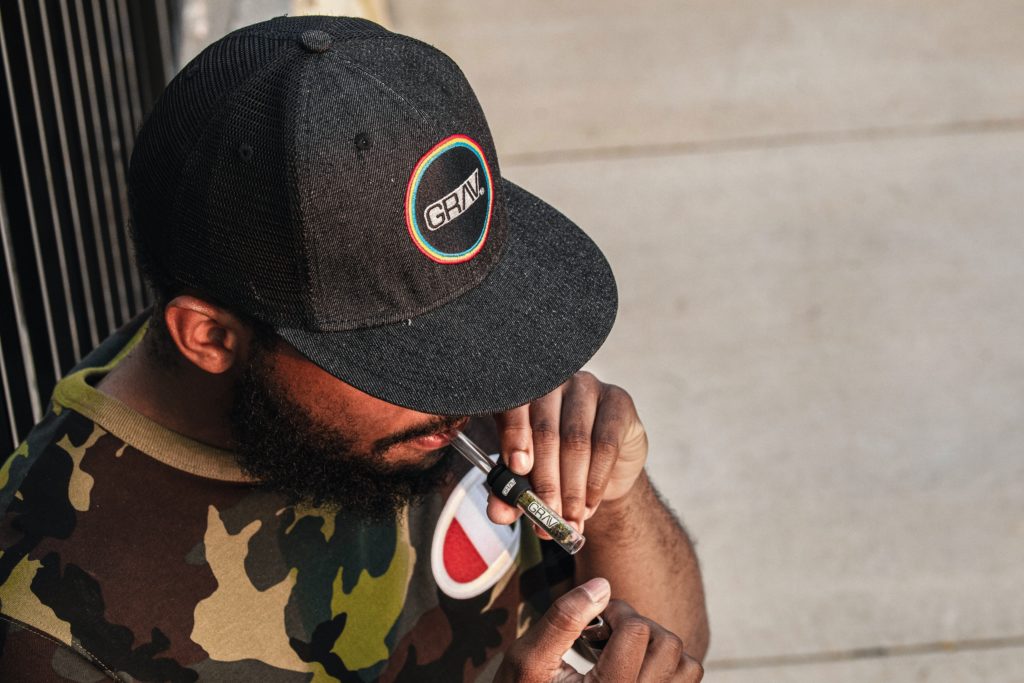How do rehabilitation centers help? What is Rehabilitation?
Rehabilitation is a term that defines a person’s process of regaining their lost capabilities. When the rehab is successful, the rehab helps the patient fully recover from the injuries. Rehabilitation Centers can also be used to solve more than physical problems. Many rehabilitation centers work towards rehabilitating individuals who suffer from alcoholism, drug addiction, and other mental illnesses.
Recovery Time in a Rehabilitation Center
Usually, the recovery time in a rehabilitation center can vary from one person to another. A lot of them also require more than one form of treatment to recover fully from their addiction. The good results of the treatment at a rehab facility also depend on the individual’s motivation and the help of their families.
It should also be kept in mind that drug addiction is a chronic disorder that will also relapse due to which, taking treatment just once will not be sufficient. So, it normally involves treatment for a much longer duration as well as other types of treatments according to the effect and response of the treatment.

Various Programs of Rehabilitation Centers
A lot of research is done to discover the factors underlying these addictions. Rehabilitation centers employ different methods to treat various patients. There are plenty of treatment methods to choose from. Treatments are customized based on a patient’s illness as well as history.
The time required for treatment may vary from person to person. Outpatient therapy programs are helpful for patients in the initial stages associated with addiction. A patient with a long history of rehabilitation usually requires additional time and specialized treatment. This type of patient may require attending a good inpatient residential program that provides around-the-clock treatment in a residential community of counselors along with patients.
Coping with Withdrawal Symptoms
Many patients in a rehabilitation center exhibit a lot of symptoms like:
- Violent emotions
- Bizarre behavior
- Loss of desire for food
- Unexplained weight gain
- Unexplained weight loss
However, all those who all exhibit such symptoms are not addicts. They may be suffering from minimal self-esteem and a lack of constructive outlook towards life. Thus, psychology plays a great role in rehabilitation. It is also required to keep the patients away from people and surroundings that may worsen their addiction.
Hence, it is better not to select a rehabilitation center close to the patient’s house. Money also plays a huge role in such treatments. Patience, by both the individual and his relations, is also a very important factor.
Rehabilitation centers play a vital role in helping a patient rediscover himself. It is very important for a patient and his family to consider a rehabilitation center as a place to begin a new step in life.
Rehabilitation Centers for Addiction
In addition to stopping drug abuse, the goal of treatment at a rehabilitation center is to return people to productive functioning in the family, workplace, and community. According to research that tracks individuals in treatment over extended periods, most people who get into and remain in treatment stop using drugs, decrease their criminal activity and improve their occupational, social, and psychological functioning.
For example, methadone treatment has been shown to increase participation in behavioral therapy and decrease both drug use and criminal behavior. However, individual treatment outcomes depend on the extent and nature of the patient’s problems, the appropriateness of treatment and related services used to address those problems, and the quality of interaction between the patient and his or her treatment providers.
Can addiction be treated successfully at a rehabilitation center?
Like other chronic diseases, addiction can be managed successfully. Treatment enables people to counteract addiction’s powerful disruptive effects on the brain and behavior and to regain control of their lives. The chronic nature of the disease means that relapsing to drug abuse is not only possible but also likely, with symptom recurrence rates similar to those for other well-characterized chronic medical illnesses—such as diabetes, hypertension, and asthma that also have both physiological and behavioral components.
Unfortunately, when relapse occurs many deem treatment a failure. This is not the case: Successful treatment for addiction typically requires continual evaluation and modification as appropriate, similar to the approach taken for other chronic diseases.
For example, when a patient is receiving active treatment for hypertension and symptoms decrease, treatment is deemed successful, even though symptoms may recur when treatment is discontinued. For the addicted individual, lapses to drug abuse do not indicate failure—rather, they signify that treatment needs to be reinstated or adjusted, or that alternate treatment is needed.

Principles of Effective Treatment at a rehabilitation center (According to the National Institute on Drug Abuse)
- Addiction is a complex but treatable disease that affects brain function and behavior. Drugs of abuse alter the brain’s structure and function, resulting in changes that persist long after drug use has ceased. This may explain why drug abusers are at risk for relapse even after long periods of abstinence and despite the potentially devastating consequences.
- No single treatment is appropriate for everyone. Treatment varies depending on the type of drug and the characteristics of the patients. Matching treatment settings, interventions, and services to an individual’s particular problems and needs is critical to his or her ultimate success in returning to productive functioning in the family, workplace, and society.
- Treatment needs to be readily available. Because drug-addicted individuals may be uncertain about entering treatment, taking advantage of available services the moment people are ready for treatment is critical. Potential patients can be lost if treatment is not immediately available or readily accessible. As with other chronic diseases, the earlier treatment is offered in the disease process, the greater the likelihood of positive outcomes.
- Effective treatment attends to multiple needs of the individual, not just their drug abuse. To be effective, treatment must address the individual’s drug abuse and any associated medical, psychological, social, vocational, and legal problems. It is also important that treatment be appropriate to the individual’s age, gender, ethnicity, and culture.
- Remaining in treatment for an adequate period of time is critical. The appropriate duration for an individual depends on the type and degree of the patient’s problems and needs. Research indicates that most addicted individuals need at least 3 months in treatment to significantly reduce or stop their drug use and that the best outcomes occur with longer durations of treatment.

Recovery from drug addiction is a long-term process and frequently requires multiple episodes of treatment. As with other chronic illnesses, relapses to drug abuse can occur and should signal a need for treatment to be reinstated or adjusted. Because individuals often leave treatment prematurely, programs should include strategies to engage and keep patients in treatment.
- Behavioral therapies—including individual, family, or group counseling—are the most commonly used forms of drug abuse treatment. Behavioral therapies vary in their focus and may involve addressing a patient’s motivation to change, providing incentives for abstinence, building skills to resist drug use, replacing drug-using activities with constructive and rewarding activities, improving problem-solving skills, and facilitating better interpersonal relationships. Also, participation in group therapy and other peer support programs during and following treatment can help maintain abstinence.
- Medications are an important element of treatment for many patients, especially when combined with counseling and other behavioral therapies. For example, methadone, buprenorphine, and naltrexone (including a new long-acting formulation) are effective in helping individuals addicted to heroin or other opioids stabilize their lives and reduce their illicit drug use.
Acamprosate, disulfiram, and naltrexone are medications approved for treating alcohol dependence. For persons addicted to nicotine, a nicotine replacement product (available as patches, gum, lozenges, or nasal spray) or an oral medication (such as bupropion or varenicline) can be an effective component of treatment when part of a comprehensive behavioral treatment program.
- An individual’s treatment and services plan must be assessed continually and modified as necessary to ensure that it meets his or her changing needs. A patient may require varying combinations of services and treatment components during the course of treatment and recovery.
In addition to counseling or psychotherapy, a patient may require medication, medical services, family therapy, parenting instruction, vocational rehabilitation, and/or social and legal services. For many patients, a continuing care approach provides the best results, with the treatment intensity varying according to a person’s changing needs.
- Many drug-addicted individuals also have other mental disorders. Because drug abuse and addiction—both of which are mental disorders—often co-occur with other mental illnesses, patients presenting with one condition should be assessed for the other(s). And when these problems co-occur, treatment should address both (or all), including the use of medications as appropriate.
- Medically assisted detoxification is only the first stage of addiction treatment and by itself does little to change long-term drug abuse. Although medically assisted detoxification can safely manage the acute physical symptoms of withdrawal and can, for some, pave the way for effective long-term addiction treatment, detoxification alone is rarely sufficient to help addicted individuals achieve long-term abstinence.
Thus, patients should be encouraged to continue drug treatment following detoxification. Motivational enhancement and incentive strategies, begun at initial patient intake, can improve treatment engagement.
- Treatment does not need to be voluntary to be effective. Sanctions or enticements from family, employment settings, and/or the criminal justice system can significantly increase treatment entry, retention rates, and the ultimate success of drug treatment interventions.
- Drug use during treatment must be monitored continuously, as lapses during treatment do occur. Knowing their drug use is being monitored can be a powerful incentive for patients and can help them withstand urges to use drugs. Monitoring also provides an early indication of a return to drug use, signaling a possible need to adjust an individual’s treatment plan to better meet his or her needs.
- Treatment programs should test patients for the presence of HIV/AIDS, hepatitis B and C, tuberculosis, and other infectious diseases as well as provide targeted risk-reduction counseling, linking patients to treatment if necessary. Typically, drug abuse treatment addresses some of the drug-related behaviors that put people at risk of infectious diseases. Targeted counseling focused on reducing infectious disease risk can help patients further reduce or avoid substance-related and other high-risk behaviors. Counseling can also help those who are already infected to manage their illness.

Moreover, engaging in substance abuse treatment can facilitate adherence to other medical treatments. Substance abuse treatment facilities should provide onsite, rapid HIV testing rather than referrals to offsite testing—research shows that doing so increases the likelihood that patients will be tested and receive their test results. Treatment providers should also inform patients that highly active antiretroviral therapy (HAART) has proven effective in combating HIV, including among drug-abusing populations, and help link them to HIV treatment if they test positive.
Reclaim Your Life At A Qualified Rehabilitation Center
Drug or alcohol addiction is a condition that can cause major health, social and economic problems that should not be taken lightly. We Level Up California can provide you, or someone you love, the tools to recover from addiction with professional and safe treatment. Feel free to call us to speak with one of our counselors. We can inform you about this condition by giving you relevant information. Our specialists know what you are going through. Please know that each call is private and confidential.